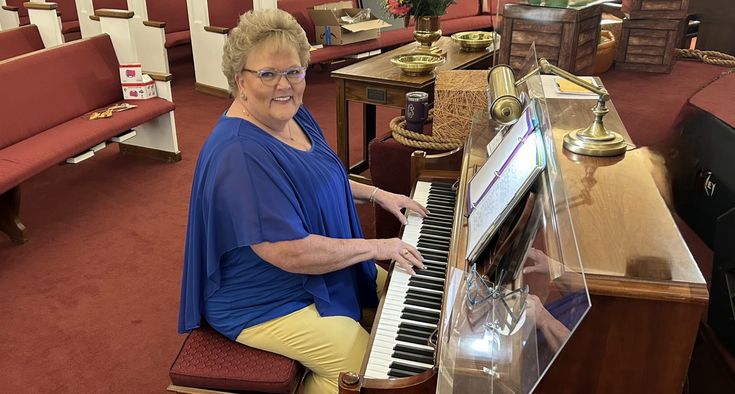Most of us have heard of a stroke: when a blocked artery or ruptured blood vessel in the brain interrupts blood flow, causing brain damage, disability or death. The statistics are frightening: In the U.S., someone has a stroke every 40 seconds and someone dies from a stroke roughly every 3 minutes, according to the Centers for Disease Control and Prevention.
But the good news? Four out of five strokes are preventable, so you can take steps to help lower your risk.

The opposite is true, too. If you aren’t actively working to lower your stroke risk, you’re putting yourself in harm’s way, said neurologist Dr. Sowmya Lakshminarayanan of Novant Health Triad Region Neurosciences Institute - Winston-Salem. Lakshminarayanan (whose patients call her “Dr. Lak”) explains what you should know about stroke and lowering your risk.
Expert stroke care and recovery services.
Why a stroke is often more than a single event
A stroke is more than a short-term medical emergency; for many, it’s a medical condition to manage for the rest of their life.
Even if a stroke is mild, the temporary lack of oxygen to the brain can still cause lasting brain damage and can lead to disability like speech deficits, weakness or paralysis on one side of the body, difficulty holding things and dizziness. The long-term effects from a stroke vary depending on the part of the brain attacked by the stroke.
In some cases, medical teams are able to provide treatment quickly using a clot-busting drug or other treatments and the patient can return either to their normal life or close to that within days. One common treatment is called thrombectomy, in which a surgeon and team quickly locate the blockage in a blood vessel with a brain scan and then suck it out in minutes using state-of-the art technology.
In other cases, with appropriate rehab and therapies, many stroke-related symptoms may improve. But often, a person who has had a stroke does not return to their normal life.
If we don’t take stroke prevention seriously, we risk being dependent on others. (Keep reading for important guidance on prevention.)
Many people who have had a stroke deal with depression, anxiety, outbursts of anger, and cognitive problems like difficulties with their memory and thinking. They get frustrated because they can’t return to their prior levels of functioning.
Is there such thing as a ‘mini’ stroke?
A name change: From stroke to ‘brain attack’?
A stroke used to be called a “cerebrovascular accident.” The name was changed because accidents are unforeseen and unpredictable — but up to 80% of strokes are potentially preventable, so calling it an “accident” wasn’t appropriate.
In the last decade, the term “brain attack” instead of “stroke” has been gaining in popularity. That’s because doctors want us to understand just how serious a stroke can be and get us to adopt healthier lifestyles.
An attack is something serious — it requires immediate action. If you think someone’s having a heart attack, you don’t “wait and see” if they start to feel better; you get help immediately. You should do the same for stroke. See the “Be Fast” box at the bottom of this page.
You may have heard of a transient ischemic attack (TIA), when a person has sudden symptoms like slurred speech or difficulty understanding others, vision changes, dizziness, or weakness or numbness in one side of the body. These symptoms usually resolve within minutes to an hour, which is why these episodes used to be called a “mini stroke.”
Many doctors have stopped using that term because any stroke-like symptoms are an emergency; there are no “mini” or “maxi” versions of a stroke. If you’re having stroke-like symptoms, even if they resolve within seconds, your body is trying to give you a warning sign that there is ongoing danger.
When there’s an accident on the highway and the cars get backed up for miles, you can’t continue to go zooming past at a high speed, thinking you’ll pass by the blockage — you have to slow down and pay attention.
Similarly, when your body is trying to get blood flowing past an area where there’s narrowing, it results in symptoms. Don’t ignore them; instead stop what you are doing, pay attention to your body and get evaluated immediately.
About 1 in 3 people who have a TIA go on to have a stroke within the next year. Often, people ignore warning signs until their stroke has progressed — leading to permanent disability, emotional turmoil and financial burden for both the patient and their caregivers.
If you or someone around you is having any symptoms of stroke, call 911 right away. A person loses almost 1.9 million neurons each minute that a stroke is untreated, so if you wait 10 minutes at home to see if you feel better, you’ve already lost 19 million neurons by the time you call. Usually, an ambulance is the fastest way to get care when every minute matters. “Time is brain,” as neurologists commonly explain.
How to reduce your risk for stroke
There are a few risk factors you can’t do anything about (they include age and genes) — but there are a lot of risk factors that you can modify. And lowering your risk for stroke is a buy-one-get-one-free deal: If you lower your risk factors for stroke, you’ve also lowered your risk factors for heart disease and vice versa.
Here are some risk factors you can proactively do something about:
- Drink at least six cups of water a day, or at least 47 ounces a day.
- Get up and move instead of sitting all day, and exercise for 30 minutes most days of the week.
- Visit your primary care doctor each year to identify your personal risk factors for stroke.
- Manage your blood pressure and cholesterol. High blood pressure is a leading cause of stroke.
- Reduce and stop vaping or smoking.
- If you’re overweight, work with your doctor to lower your weight.
- If you have sleep apnea, manage it. (You have newer options if you aren’t a fan of CPAP machines.)
- If you have heart conditions like coronary artery disease, atrial fibrillation, heart valve defects or enlarged heart chambers, make sure you’re being monitored by a cardiologist.
- Don’t use recreational drugs or misuse prescription drugs — even one time can lead to stroke.
- Manage Type 1 or Type 2 diabetes if you have it.
If you’re in these groups, you’re at a higher risk for stroke, so respond immediately to any signs or symptoms of stroke:
- People who regularly have migraines.
- Women on oral contraceptive pills, since these can increase blood coagulation.
- People with sickle cell disease or certain congenital conditions such as Marfan syndrome.
- And if you’ve had one stroke, you’re at high risk to have more: Nearly 1 in 4 strokes in the U.S. occurs in someone who has already had a previous stroke.
Risk factors build on one another: if you’re a female who smokes, doesn’t drink enough water, has migraines, is on oral contraceptive pills and is sedentary during the day, it’s like you’re putting a lot of firecrackers in a jar waiting for it to explode.
Also, don’t think strokes are “just for old people.” Strokes are rising in adults age 49 and below, probably due to increases in high blood pressure and Type 2 diabetes in younger and middle-aged adults.
Lakshminarayanan’s closing message: Stroke needs to be taken seriously, and everyone needs to know about preventable risk factors that they can control — because prevention is easier than a cure.
Know the signs of stroke: BE FAST
B—Balance: Is the person suddenly unsteady?
E—Eyes: Is someone suddenly having blurred vision, double vision or complete loss of sight in one or both eyes?
F—Face: Ask the person to smile. Does one side of the face droop?
A—Arms: Ask the person to raise both arms. Does one arm drift downward?
S—Speech: Ask the person to repeat a simple phrase. Is the speech slurred or strange?
T—Time: Call 911 right away if you’ve seen any of these symptoms.











